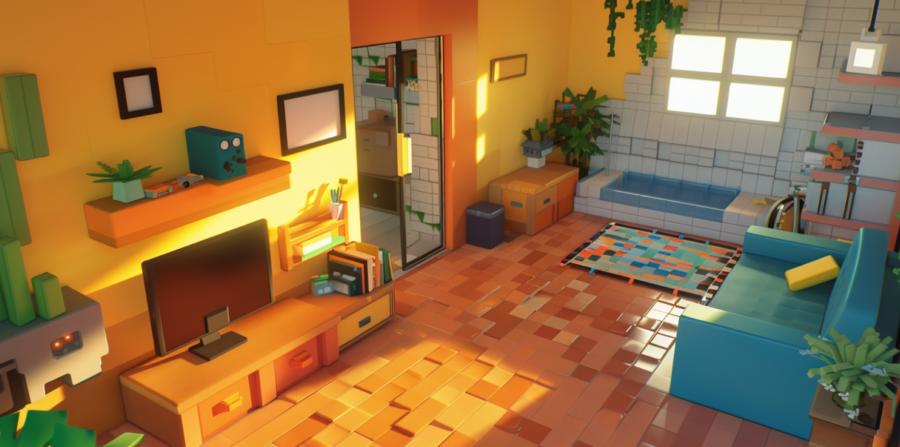Designing with Family Growth in Mind
It’s an uncomfortable truth that families expand in ways you don’t expect. Even if you think you’ve counted everyone—including the dog—another relative might need to move in, or the children might decide that sharing a room is a barbaric act of cruelty. Future-proofing means leaving breathing space, literally.One way is to design modular layouts: spaces that can be subdivided with sliding walls, movable partitions, or furniture that moonlights as architecture. A study today could become a nursery tomorrow, and then morph into a teenager’s lair of despair. The room doesn’t change size, but it changes role. That’s a kind of magic.
Of course, you could ignore this advice and build exactly what you think you need right now. Just remember that reconfiguring a room later usually involves dust, drilling, and regret. Better to build in flexibility from the start.
Adapting for Remote Work
Working from home was once an exotic rarity, now it’s as common as the delivery driver who seems to know the contents of your fridge better than you do. If your renovation doesn’t anticipate this, you’ll end up balancing a laptop on a pile of laundry while explaining quarterly projections to your boss.Think beyond the token “desk in the corner.” A future-proof renovation acknowledges that remote work might evolve into a permanent lifestyle. Plan for acoustic insulation so your big presentation isn’t accompanied by the blender. Wire in extra power outlets where you don’t think you’ll need them—spoiler: you will. Designating a room that can act as an office, but later convert into something else, keeps your options alive.
And remember light. Nothing saps morale like spending eight hours in a converted cupboard with a single bulb that flickers like it’s auditioning for a horror film. Windows, skylights, or at least decent artificial lighting can transform productivity and mood. The investment is worth it.
Accessibility as Insurance
It might feel premature to consider grab rails or wide corridors while you’re still able to sprint upstairs two at a time. But accessibility isn’t just about aging; it’s about making a house hospitable to anyone—grandparents visiting, a friend on crutches, or even yourself after an ill-timed football injury.Simple design tweaks—like level thresholds, wider doorways, and step-free showers—pay dividends later. These details don’t scream “hospital wing”; done well, they’re practically invisible until the day they prove essential. A future-proof renovation is an act of kindness to your future self, the one who may not be so nimble but still wants dignity and independence.
Service Access and Hidden Infrastructure
Wires, pipes, and ducts are like the circulatory system of a house. Ignore them, and you’ll regret it when something bursts, fizzles, or blocks. Future-proofing a renovation means planning routes for services that can be accessed without ripping apart your walls like an amateur archaeologist.Think access panels, risers, and conduits that allow new tech to be installed without chaos. Today’s house wants internet cabling and smart heating systems; tomorrow’s might demand things we can’t yet imagine. Give your walls and floors space to adapt, rather than entombing the technology of 2025 in layers of plasterboard. Nobody wants to be chiseling through brickwork just to install a charging port for whatever replaces phones.
Flexible Fit-Outs and the Art of Adaptation
Furniture and fixtures can be as permanent or as flighty as you choose. Built-in shelves that can be adjusted, kitchens with islands on wheels, wardrobes that can migrate across a room—all these make your space less like a rigid sculpture and more like a stage set that can host different plays.- Opt for storage that can be expanded or reconfigured as your needs grow.
- Choose fittings that can be replaced without tearing down half a room.
- Design with multipurpose furniture that doesn’t feel like a compromise.
Renovations Age Too
Every renovation is born with the hubris of permanence. The fresh plaster, gleaming counters, and smooth flooring all whisper: this will last forever. It won’t. Houses age like people do—sometimes gracefully, sometimes with odd creaks and groans. Future-proofing doesn’t mean stopping time, it means planning for the inevitable shifts.So when you renovate, resist the lure of perfection set in stone. Instead, aim for resilience. Create rooms that can grow, shrink, bend, or reimagine themselves. Life will always deliver surprises, but at least your house won’t sulk when asked to keep up.
Home Stretch and Elastic Walls
Renovations aren’t crystal balls, but they can be wise wagers. You’re not predicting the future, you’re preparing for its mischievous turns. Whether it’s the sudden arrival of a home office, the gentle necessity of accessible design, or the unplanned expansion of a household, the choices you make today ripple forward. Think of it as a conversation between your present self and the person you’ll become. Hopefully, that person will thank you—and maybe even forgive you for the wallpaper.Article kindly provided by lacd.co.uk


